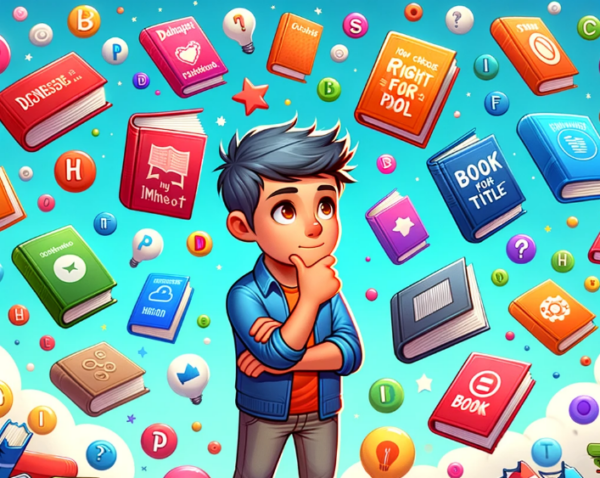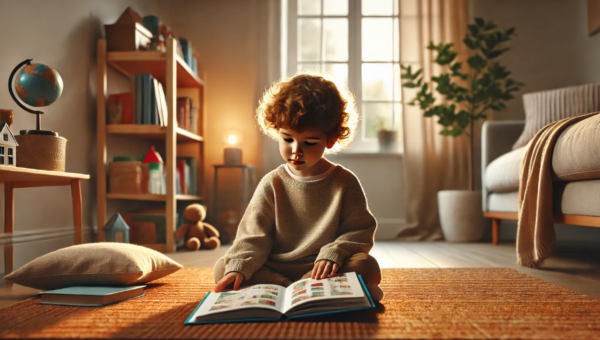In the last two decades, self-publishing a book has gone from the literary equivalent of the Wild West to a thriving, respectable industry. Once seen as a desperate last resort, it’s now a legitimate route for authors to control their creative and financial destinies. With platforms like Amazon’s Kindle Direct Publishing and Smashwords, authors are now their own editors, marketers, and distributors—minus the 9-to-5 publishing office grind.
In 2019 alone, over 1.68 million self-published books were released in the U.S., according to Bowker. That’s a staggering leap from just over 200,000 titles in 2011, showing the rapid growth and appeal of self-publishing. And it’s no surprise, self-publishing offers authors higher royalties, full creative control, and the ability to quickly adapt to trends. Take E.L. James’s Fifty Shades of Grey, Andy Weir’s The Martian, or Beatrix Potter’s The Tale of Peter Rabbit—all self-published hits that became literary icons. These authors have turned self-publishing into a success story that rivals any big-name publisher.
Ready to dive into how self-publishing is reshaping the literary world? Stick around, and you might just discover your next favorite success story.
The Shift from Traditional to Self-Publishing
Self-publishing has completely flipped the script on how authors get their books into the hands of readers, offering a fresh alternative to the traditional publishing maze. Historically, authors had to first land a literary agent, who’d then pitch their manuscript to publishers. If they were lucky enough to get a deal, the publisher would handle everything from production to distribution to marketing, leaving the author with only a small percentage of royalties, typically 10-15% of the book’s sale price. The entire process could take years, from manuscript submission to the book finally hitting the shelves.
Enter self-publishing, which lets authors cut out the middleman and go straight to the market. Authors can now publish their work within months—or even weeks—of finishing it, keeping full creative control over every detail, from the cover design to pricing to marketing strategy. This direct route offers faster access to readers and, financially, it’s often much more rewarding. Authors can earn up to 70% of the sale price in royalties, compared to the paltry 10-15% from traditional publishing.
Why are so many authors choosing the self-publishing route? It’s simple: they want more creative freedom, bigger financial returns, and a quicker route to market. With the ability to quickly respond to market trends, publish niche genres, and engage with readers directly through social media and personalized marketing, self-publishing has become a game-changer.
Self-Publishing Success Stories: Most Successful Self-Published Authors
These authors prove that self-publishing isn’t just a way to publish—it’s a way to build a career, make a lasting impact, and reach millions of readers worldwide. Each success story highlights the freedom, potential, and financial rewards that come with choosing the self-publishing route.
E.L. James
E.L. James is one of the most iconic self-publishing success stories.
- Lifetime Earnings: Estimated at $100 million+
- Most Notable Work: Fifty Shades of Grey series
- Books Sold: Over 150 million copies
- Sources: The Guardian, Forbes
Fifty Shades of Grey started as fan fiction before becoming a global phenomenon, with James self-publishing the first installment in 2011. Her ability to tap into the erotic romance genre in a way that resonated with millions of readers led to an unprecedented success. With film adaptations, merchandising, and books translated into over 50 languages, James redefined what was possible for self-published authors.
Amanda Hocking
Amanda Hocking took the self-publishing world by storm in 2010 with her young adult paranormal novels.
- Lifetime Earnings: Estimated at $20 million+
- Most Notable Work: Trylle Trilogy
- Books Sold: Over 1.5 million copies
- Sources: Forbes, The New York Times
After being rejected by numerous traditional publishers, Hocking decided to take control of her own career. Her Trylle Trilogy sold over a million copies, earning her millions in revenue. Eventually, she struck a multimillion-dollar deal with St. Martin’s Press, but Hocking’s early success remains a testament to the power of indie publishing, particularly within niche genres.
Hugh Howey
Hugh Howey’s self-publishing story is one of the best examples of how an author can make a living—and a fortune—without the backing of a traditional publisher.
- Lifetime Earnings: Estimated at $10 million+
- Most Notable Work: Wool series
- Books Sold: Over 3 million copies
- Sources: The New York Times, The Guardian
In 2011, he self-published Wool, a post-apocalyptic series that started as a series of short stories on Amazon. Howey’s massive success allowed him to quit his day job and focus solely on writing. While Wool was eventually picked up by Simon & Schuster, Howey retained the digital rights, allowing him to craft a hybrid publishing deal that benefited both him and his readers.
Andy Weir
Andy Weir is a true success story in the self-publishing world.
- Lifetime Earnings: Estimated at $50 million+
- Most Notable Work: The Martian
- Books Sold: Over 5 million copies (Kindle and print)
- Sources: The New York Times, USA Today
The Martian, originally self-published as a series on his personal blog, gained traction among readers and quickly became a bestselling Kindle book at just $0.99. Its popularity led to a publishing deal with Crown Publishing, and the book was eventually adapted into a successful blockbuster film directed by Ridley Scott. Weir’s story proves that even science fiction can thrive in the self-publishing realm and achieve mainstream success.
John Locke
John Locke was one of the first authors to make a fortune through self-publishing on Amazon.
- Lifetime Earnings: Estimated at $20 million+
- Most Notable Work: The Donovan Creed series
- Books Sold: Over 3 million copies
- Sources: The Huffington Post, Forbes
His Donovan Creed series, which features a retired hitman, became a major success after he published it in 2010. Locke’s books sold millions of copies, and his savvy marketing strategies, including using Amazon’s Kindle Direct Publishing to its fullest potential, helped him generate a multi-million-dollar income. Locke is one of the trailblazers who showed authors the potential of self-publishing as a viable path to success.
Your Publishing Journey Awaits – Start NowNotable Mentions: List of Self-Published Authors
Bella Andre: Bella Andre is a bestselling romance author who self-published her The Sullivans series. With over 7 million copies sold, Andre has built a massive readership through her use of Kindle Direct Publishing, proving that self-publishing can be incredibly lucrative in the romance genre.
Colleen Hoover: Colleen Hoover started her career by self-publishing Slammed in 2012. The book’s success led to a huge following and subsequent publishing deals. Hoover has since become a top author in the contemporary fiction and romance categories, with millions of copies sold worldwide.
Craig Martelle: Craig Martelle is a science fiction author who gained recognition through self-publishing his The Frontiers Saga series. With over 1 million books sold, Martelle has become a key figure in indie science fiction, proving that the genre has a substantial self-publishing market.
Rachael Herron: A successful self-published author in the women’s fiction and romance genres, Rachael Herron built her following through the Cypress Hollow series. Herron has sold tens of thousands of copies independently and is known for her strong storytelling and community engagement.
Mark Dawson: Mark Dawson is one of the most successful self-published thriller authors. He is best known for his John Milton series and has sold over 1 million books. Dawson has also been a pioneer in indie author marketing, using his own success to teach other authors about effective self-promotion and sales strategies.
Top 7 Most Successful Self-Published Books
These seven books are shining examples of the power of self-publishing, each one transcending traditional boundaries and proving that with the right combination of creativity, timing, and marketing, a self-published book can not only succeed but dominate.
Fifty Shades of Grey by E.L. James
Fifty Shades of Grey started as fan fiction before becoming one of the most successful self-published books in history. James self-published the first installment in 2011, and it quickly became a global sensation. With over 150 million copies sold, it sparked a cultural phenomenon and led to a movie franchise. Its success not only transformed James’ life but also helped bring self-publishing into the mainstream.
The Martian by Andy Weir
Originally self-published as a $0.99 Kindle book, The Martian became a bestseller almost overnight. Weir’s story of an astronaut stranded on Mars captured the hearts of readers and quickly climbed the Kindle charts. Its success led to a publishing deal with Crown Publishing and a major film adaptation. The Martian sold over 5 million copies and solidified Weir as a key figure in the self-publishing world.
Wool by Hugh Howey
Hugh Howey’s Wool began as a series of short stories self-published on Amazon, eventually becoming a full-length novel that has sold over 3 million copies. The post-apocalyptic narrative became a hit with readers, and Howey’s success allowed him to secure a hybrid publishing deal with Simon & Schuster while retaining digital rights. Wool was also adapted into a film, highlighting how self-published books can transcend the page and find success in other media.
The Trylle Trilogy by Amanda Hocking
Amanda Hocking’s Trylle Trilogy catapulted her to fame in 2010 after she self-published the series of young adult paranormal novels. Selling over a million copies, Hocking’s books became a sensation in the indie market. Her success led to a multimillion-dollar publishing deal with St. Martin’s Press. Hocking’s story is one of the most inspirational in self-publishing, particularly for authors in niche genres.
Still Alice by Lisa Genova
Lisa Genova self-published her debut novel Still Alice in 2007, telling the poignant story of a woman diagnosed with Alzheimer’s disease. The book gained widespread attention and was later picked up by Simon & Schuster, leading to over 2 million copies sold and a successful film adaptation starring Julianne Moore. Genova’s success highlights the power of self-publishing to give voice to important social issues and find a dedicated audience.
The Shack by William P. Young
Initially self-published in 2007, The Shack became an unexpected bestseller, selling over 20 million copies worldwide. The novel, which explores themes of spirituality and loss, was originally self-published by Young after struggling to find a traditional publisher. Its overwhelming success led to a publishing deal with a major house and a film adaptation. The Shack remains one of the most successful self-published books of all time, demonstrating that faith-based fiction can achieve massive popularity.
The Alchemist by Paulo Coelho
While The Alchemist was originally published by a traditional publisher, its success in the self-publishing world later played a pivotal role in its global reach. After initially struggling to find a wide audience, Coelho’s self-published version of The Alchemist helped the book gain traction, selling over 65 million copies worldwide. It is one of the best-selling books of all time and has become a symbol of how self-publishing can bring international success to a writer’s work.
Key Factors in Self-Publishing Success
Achieving self-publishing success requires more than just writing a book; it demands a proactive approach to several critical elements that can make or break a publication’s success. Central to these factors are effective marketing, a robust network, quality content, professional presentation, and strategic use of digital platforms.
Marketing and Network
A well-orchestrated marketing plan and a strong network are indispensable. Successful self-published authors often leverage personal and professional connections to promote their books. They participate in literary communities, attend book fairs, and engage in speaking events, which amplify their visibility and credibility. Building a network that includes other authors, industry influencers, and dedicated readers can provide essential support and promotional leverage.
Quality Content and Professional Presentation
At the heart of any successful book is quality content. For self-published authors, investing in professional editing services is crucial to ensure that the text is free from errors and is as engaging as possible. Equally important is the book’s exterior—its cover design. A professionally designed cover that resonates with the genre and target audience can significantly increase the book’s appeal and sales potential.
Utilization of Social Media and Author Platforms
In the digital age, a strong online presence can dramatically enhance an author’s reach and reader engagement. Successful self-published authors often utilize social media platforms to interact with their audience, share insights about their writing process, and announce new releases or promotions. Additionally, maintaining a comprehensive author website can serve as the hub for all book-related information, direct sales, and building an email list for direct marketing.
Together, these elements create a comprehensive approach to self-publishing that can lead to significant sales, establish a strong reader base, and potentially attract attention from traditional publishers.
Building a Sustainable Career in Self-Publishing
The long-term success of self-publishing as a full-time career is becoming increasingly viable, thanks to the digital age. However, it requires consistent output, strategic marketing, and strong reader connections. Many authors see self-publishing as a career rather than a one-off project, and their continued success proves it’s possible to thrive in the indie world. Authors like Hugh Howey and Amanda Hocking have sustained their careers by continuously producing works that resonate with readers and adapting to market changes.
Self-publishing also opens doors to traditional publishing deals. Colleen Hoover, for example, began as a self-published author before her books gained mainstream success, eventually hitting the New York Times bestseller list. This flexibility—moving between self-publishing and traditional publishing—can help authors broaden their reach and solidify long-term success.
With the right strategy and dedication, self-publishing can offer a sustainable and rewarding career, providing authors with opportunities to grow their readership and thrive.
Challenges Facing Self-Published Authors
While self-publishing offers numerous opportunities for authors, it also presents several significant challenges. The most prominent of these are market saturation, distribution hurdles, and the ongoing stigma associated with self-publishing.
Market Saturation and Competition
The ease of access to self-publishing platforms has led to an explosion of new titles in the market. With millions of books available, the competition to capture readers’ attention is fierce. Authors must not only write a compelling book but also excel in marketing to stand out from the crowd. The sheer volume of books can overwhelm potential readers, making it difficult for new authors to gain traction without a clear and effective marketing strategy.
Distribution and Visibility
Although digital platforms have made publishing easier, distribution remains a challenge for self-published authors. Unlike traditional publishers who have established relationships with booksellers and distributors, self-published authors often struggle to get their books into physical stores and may rely heavily on online sales, which limits their exposure to potential readers who prefer physical copies. Achieving visibility in a crowded market often requires significant effort and investment in marketing and promotions.
Quality Perceptions and Stigma
Despite many success stories, a stigma still exists around self-publishing. Some readers and critics perceive self-published books as lower in quality due to the lack of a traditional filtering and editing process. This perception can be a barrier to gaining credibility and respect in the literary community. To combat this, self-published authors need to invest in professional editing, design, and formatting services to ensure their work meets high standards and can compete with traditionally published books.
Addressing these challenges requires a proactive approach, involving strategic marketing, leveraging professional services, and persistent efforts to build legitimacy and a dedicated reader base.
Impact on the Literary World
Self-published authors are reshaping the literary landscape, challenging traditional norms and proving that independently published works can match, and even surpass, those from traditional publishers in quality and creativity. Self-published hits like The Martian by Andy Weir and Still Alice by Lisa Genova have not only achieved commercial success but have also earned critical acclaim and prestigious awards.
These books are prime examples of how self-publishing is being recognized as a legitimate and influential force in the literary world. Literary festivals are now welcoming self-published authors, and critics are increasingly acknowledging their work. As the stigma around self-publishing fades, more authors are finding opportunities to showcase their talents and make their mark on the global literary scene.
Future Trends in Self-Publishing
The future of self-publishing is bright, with technology driving exciting changes. As tools and platforms improve, self-published authors will have more powerful marketing options and easier ways to publish. Artificial intelligence could help automate content creation, improve marketing personalization, and boost reader targeting through better analytics.
Traditional publishers are also recognizing the value of self-published authors and are increasingly offering hybrid deals that allow authors to retain more rights. This is leading to a more collaborative relationship between self-publishing and traditional publishing.
Looking ahead, innovations like blockchain could change how authors manage copyrights and track sales, ensuring transparency and efficiency. The rise of audiobooks and interactive content will also provide new ways for self-published authors to reach wider audiences.
With these advancements, self-publishing is set to become an even more integral part of the literary world, offering authors more opportunities and tools than ever before.
Self-Publishing Platforms
Self-publishing platforms like Amazon’s Kindle Direct Publishing (KDP) and Smashwords have transformed how authors publish and distribute their books. KDP lets authors publish both eBooks and paperbacks, making them available on Amazon’s global marketplace with minimal upfront costs. Smashwords offers wider distribution, reaching major eBook retailers like Apple Books, Barnes & Noble, and Kobo. These platforms provide essential tools for formatting, cover design, and marketing, allowing authors to independently manage the publishing process.
By removing barriers typical of traditional publishing, these platforms give authors the freedom to explore niche markets, experiment with content, and directly engage with their audiences. Real-time sales data and customer feedback also empower authors to adapt their strategies quickly, increasing their chances of success. With digital publishing and print-on-demand services, these platforms have drastically reduced publishing costs and risks, opening the door for more writers to maintain control over their work while reaching global readers.
FAQs – Famous Self-Published Authors
Q1: Who is the most successful self-published author?
The most successful self-published author is often considered to be Amanda Hocking, who became a millionaire by self-publishing her paranormal romance novels. Her success story helped prove that self-publishing could be a viable path to financial success in the publishing world.
Q2: Who is the youngest self-published author?
The title of the youngest self-published author often goes to young prodigies like Christopher Paolini, who published Eragon at just 15 years old. While many self-published authors start later in life, these young authors demonstrate that age is not a barrier to success in self-publishing.
Q3: Do any famous authors self-publish?
Yes, several famous authors have chosen to self-publish, including renowned writer Hugh Howey, whose Wool series became a massive hit before being picked up by a traditional publisher. Self-publishing allows well-established authors to maintain control over their work while reaching a large audience.
Q4: Has a self-published book ever become a bestseller?
Absolutely! Fifty Shades of Grey by E.L. James started as a self-published book before becoming an international bestseller and even a blockbuster film franchise. This book’s journey shows that self-publishing can lead to major success, even in the traditionally dominated publishing world.
Q5: What is the most successful self-published book?
One of the most successful self-published books is The Martian by Andy Weir, which started as a self-published ebook before being acquired by a major publisher and later turned into a hit movie. The book’s success highlights how self-publishing can be the first step toward widespread recognition.
Q6: How many books does the average self-published author sell?
The average self-published author typically sells fewer than 100 books, though this varies widely based on the genre, marketing efforts, and the author’s platform. While many self-published books do not become bestsellers, those who effectively market their books can significantly increase their sales numbers.
Q7: Do self-published authors get royalties from self-publishing?
Yes, self-published authors receive royalties directly from book sales, often at a higher percentage compared to traditional publishing royalties. Depending on the platform, self-published authors can earn anywhere from 35% to 70% of the sale price, making it a lucrative option for many writers.







